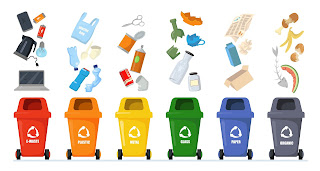The Evolution of Swag Items: From Gimmicks to Brand Powerhouses
Swag items—those branded giveaways often spotted at conferences, corporate events, or tucked inside new hire welcome kits—have come a long way. Once viewed as throwaway trinkets, today’s swag items are curated, intentional, and often eco-conscious tools used to boost brand visibility, reinforce company culture, and foster customer loyalty. As businesses continue to seek meaningful ways to connect with their audiences, the role of swag in marketing strategies has taken on new importance.
What Exactly Are Swag Items?
Swag items, short for “Stuff We All Get,” are promotional products branded with a company’s logo, slogan, or other identifiers. These can range from practical items like water bottles, tote bags, and notebooks to high-end tech gadgets and apparel. The idea is simple: give people something useful or fun that reminds them of your brand every time they use it.
When done right, swag serves as a physical extension of your brand identity. A thoughtfully chosen item doesn’t just make someone smile; it can become part of their daily routine, which means daily exposure for your brand. Whether it’s a cozy hoodie worn on Zoom calls or a wireless charger that sits on a client’s desk, swag can drive subconscious brand loyalty over time.
The Rise of Thoughtful, High-Impact Swag
The swag game is no longer about quantity—it’s about quality and intention. Modern consumers are more environmentally and socially conscious, and brands are responding accordingly. Gone are the days of single-use plastic items and cheaply made knick-knacks. Today, companies are investing in premium swag items that align with their values and resonate with their audiences.
Reusable drinkware, organic cotton clothing, seed paper notebooks, and upcycled materials are now common choices. Many companies are also focusing on inclusivity and personalization, tailoring swag items to the recipient’s interests or needs. Customization not only increases the chances of the item being used, but also enhances the emotional connection to the brand.
Another growing trend is digital or virtual swag—downloadable resources, subscriptions, or donation credits in lieu of physical products. These items reduce waste and cater to the increasing number of remote teams and virtual events.
Why Swag Still Matters in a Digital World
In an age dominated by digital marketing, tangible swag items continue to offer something unique: physical presence. Holding or using a branded item creates a sensory connection that can’t be matched by emails or online ads. This tactile interaction builds trust, reinforces branding, and can even serve as a conversation starter.
Moreover, swag offers versatility. It can be used internally for employee recognition, recruitment, and team building, or externally for client gifts, event giveaways, and brand awareness campaigns. When swag aligns with a company’s mission and is thoughtfully distributed, it becomes more than a gift—it becomes a strategic tool.
Closing the Loop: Sustainable Swag Solutions
As swag becomes more intentional, so does the conversation around its lifecycle. What happens to swag items after they’ve served their purpose? How can companies ensure their branded products don’t end up in landfills?
That’s where SwagCycle comes in. SwagCycle helps organizations responsibly manage the full lifecycle of their promotional products—whether that’s finding donation partners for unused items, recycling old swag, or advising on sustainable alternatives. By offering circular solutions for branded merchandise, SwagCycle empowers businesses to maintain brand integrity while making environmentally sound choices. It’s the smarter, greener way to handle swag—because doing good for the planet should be just as important as promoting your brand.




Comments
Post a Comment